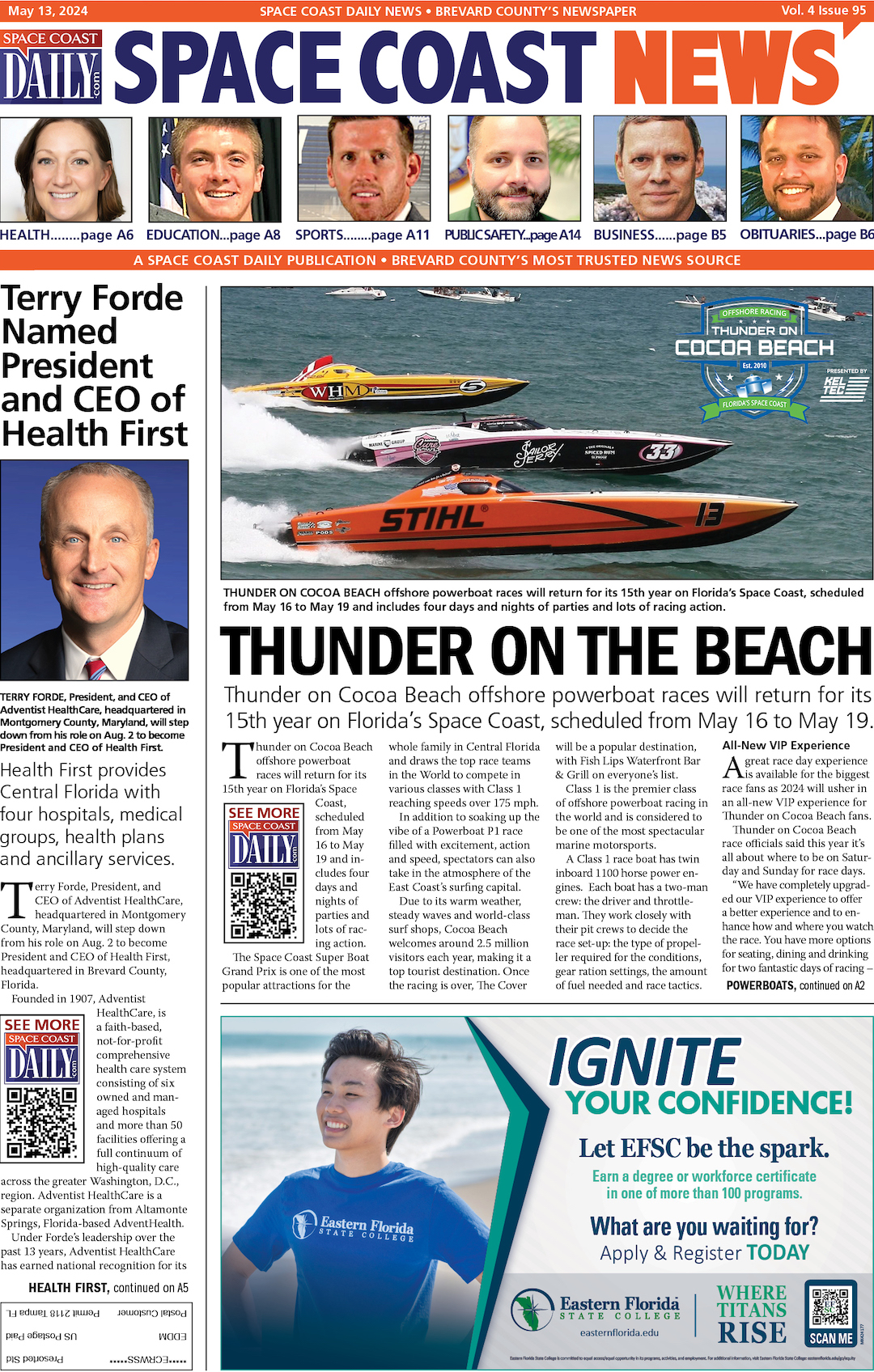THIS WEEK @NASA: Roman Space Telescope Could Find 400 Earth-Mass Rogue Planets
By Space Coast Daily // July 22, 2023
latest happenings around NASA
ABOVE VIDEO: Sending a swarm of small satellites into orbit, the first views from our newest storm-watching mission, and making the grade for investing in small business … a few of the stories to tell you about – This Week at NASA!
 NASA’s Starling Mission Sends Swarm of Satellites into Orbit
NASA’s Starling Mission Sends Swarm of Satellites into Orbit
A Rocket Lab Electron rocket launched from New Zealand on July 18 to carry four small satellites to low-Earth orbit for our Starling mission.
The cereal box-sized spacecraft will work together as a swarm to see if they can maneuver, communicate, and make decisions on their own, without real-time updates from ground controllers.
The mission could help to advance self-coordinating robotic swarms for future science and exploration missions to the Moon, Mars, and deep space.
TROPICS CubeSat Mission Captures First Views of Hurricanes
Our storm-observing TROPICS satellites recently collected the mission’s first views of hurricanes. Late last month, the mission captured imagery data of the first named storms of the Eastern Pacific hurricane season.
TROPICS uses a constellation of four identical small satellites to observe tropical cyclones about once an hour – far more frequently than most science satellites.
The increased observations could help forecasters and officials better understand and prepare for rapidly evolving storms.
NASA Maintains “A” for Investing in Small Businesses
During a July 18 event at NASA headquarters, the Small Business Administration announced that NASA earned an “A” on the Fiscal Year 2022 Small Business Federal Procurement Scorecard. The scorecard looks at how federal agencies rank on meeting their small business goals. NASA has directly invested $3.6 billion in over 1,700 small businesses across the country, creating good-paying jobs and opportunities for Americans in all 50 states.
Roman Space Telescope Could Find 400 Earth-Mass Rogue Planets
According to new research from NASA and Japan’s Osaka University, rogue planets – which are planets that drift freely through space untethered to a star – far outnumber planets that orbit stars. With so many rogue planets out there, researchers believe that our Nancy Grace Roman Space Telescope could find about 400 rogue planets similar in mass to Earth after the telescope launches in 2027.
That’s what’s up this week @NASA












